Article Archive
Tom Daxon
Laconia
2 July, 2018
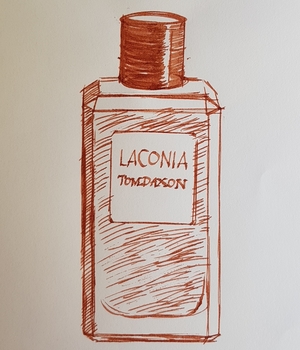 The Greek region of Laconia includes some of the most historic and spectacular parts of the Peloponnese, including the city of Sparta (the regional capital), the Mani peninsula and, on its eastern edge, the extraordinary presque-île of Monemvasia. Seen from the mainland, this huge rock – over 100 metres high, 300 metres wide and a kilometre long – towers over the sea that encloses it, surrounded by precipitous cliffs on every side. Connected to the shore by a narrow causeway, it makes a formidable natural fortress, and in the middle ages an important city grew up on its summit, connected to a small walled town on the narrow shelf at its base.
The Greek region of Laconia includes some of the most historic and spectacular parts of the Peloponnese, including the city of Sparta (the regional capital), the Mani peninsula and, on its eastern edge, the extraordinary presque-île of Monemvasia. Seen from the mainland, this huge rock – over 100 metres high, 300 metres wide and a kilometre long – towers over the sea that encloses it, surrounded by precipitous cliffs on every side. Connected to the shore by a narrow causeway, it makes a formidable natural fortress, and in the middle ages an important city grew up on its summit, connected to a small walled town on the narrow shelf at its base.
Lacking water and reliant on man-made cisterns cut into the rock, the city was gradually abandoned and today lies in romantic ruins, overgrown with scrub and difficult to explore. But the little town has been gradually restored, and now forms a car-free tourist haven. It was while staying at a luxury hotel here that British perfumer Tom Daxon found the inspiration for his latest scent, in the form of lemonade made with ice, local mint and honey and lemons grown on the hotel’s own estate. He’s named it after the region, which itself gave us the word ‘laconic’, apparently because Spartans were famously sparing with words.
Like me, Daxon is a fan of colognes, especially for the summer months, but he also feels that his customers want something that lasts longer than a few minutes on their skin. Citrus scents, refreshing though they may be, are notoriously short-lived, so the question was how to extend his new fragrance in an interesting way. His solution includes quite a long list of zingy and green ingredients, starting with lemon, yellow mandarin, orange and bergamot, followed by violet leaf, spearmint and clary sage, as well as ginger, cubeb, pink pepper and cardamom, all underpinned by vetiver and long-lasting synthetic musks.
The result is an attractive, fresh-smelling perfume with good staying power, though personally I’m willing to forego longevity in a cologne in favour of that all-important if all too short-lived blast of uplifting freshness – a laconic cologne, if you will. But when you’re paying £155 for 100ml, I can see the argument in favour of depth and development. I also admire the design of Daxon’s chunky, faceted bottles and smart monochrome packaging, which adds to the feeling of weight and lasting quality.
Louis Vuitton
Au Hasard
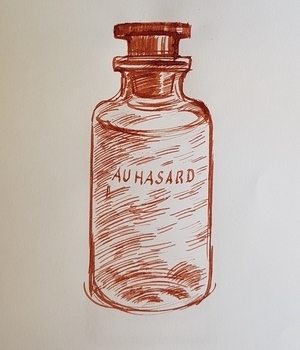 Almost alone among major luxury brands, Louis Vuitton did not have a single perfume to its name until 2016. That was the year when – after four years of rumours and the appointment, in 2011, of Jacques Cavallier as the company’s in-house perfumer – the company released seven scents in smart but simple bottles designed by Marc Newson. Floral and feminine in style, they were excellent examples of their kind.
Almost alone among major luxury brands, Louis Vuitton did not have a single perfume to its name until 2016. That was the year when – after four years of rumours and the appointment, in 2011, of Jacques Cavallier as the company’s in-house perfumer – the company released seven scents in smart but simple bottles designed by Marc Newson. Floral and feminine in style, they were excellent examples of their kind.
Two years on Vuitton and Cavallier have turned their attention to the male sex, with ‘Les Parfums’ for men – five new fragrances that, in their words, ‘pay homage to the adventurer on a quest for self-revelation’. Sensibly they’ve kept the same design for the bottles and packaging, with only subtle changes: each eau de parfum is a different pale colour, while the black magnetic bottle stoppers are stamped with the silver LV logo.
Sur la Route is Vuitton’s take on eau de cologne, with the evanescent but always refreshing scent of Calabrian lemon – specifically the zingy fruit and the bitter-fresh pulp around it – extended with a special grade of cedar and a touch of bergamot. The green note of freshly cut grass is balanced with the softer smell of Peruvian balsam which, Cavallier says, ‘includes the freshness of citrus and spicy notes of pink peppercorn and nutmeg’.
Orage uses the sexy, earthy smell of patchouli and pairs it with long-lasting top-quality iris, which adds a plush note of luxury to any scent. Though it’s not as stormy as its name suggests (or as woody as the press release describes it), Orage does have a hint of the green freshness that follows a summer downpour in the countryside.
L’Immensité has, perhaps, the most in common with the general run of men’s ‘sports’ fragrances such as Dior’s Sauvage, mainly because it has an overdose of the synthetic molecule Ambroxan. Some people love its mineral, slightly peppery note, but it reminds others of an electrical fire. Here, it’s framed by bitter grapefruit, ginger and labdanum.
For lovers of gourmand perfumes, there’s Nouveau Monde, which uses an extract of natural cocoa from the former French colony of Ivory Coast in combination with oud to create a rich and exotic scent with a touch of saffron underneath. Despite being an eau de parfum strength, it’s restrained rather than overpowering, like all the fragrances in the range.
My personal favourite, though, is Au Hazard, which takes another classic ingredient of men’s perfumery, sandalwood, using a sustainably cultivated variety from Sri Lanka. It’s a gentle, slightly spicy fragrance, with hints of cardamom and ambrette seeds, which would smell equally comfortable as a day or evening scent.
Etat Libre d’Orange
You Or Someone Like You
25 August, 2017
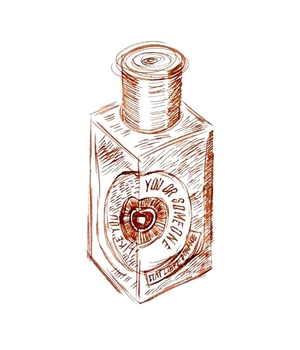 Victor Hugo, Tom of Finland, Tilda Swinton and the Marquis de Sade may not, on the face of it, have a great deal in common, but they have all inspired perfumes from the French niche-fragrance brand Etat Libre d’Orange.
Victor Hugo, Tom of Finland, Tilda Swinton and the Marquis de Sade may not, on the face of it, have a great deal in common, but they have all inspired perfumes from the French niche-fragrance brand Etat Libre d’Orange.
You Or Someone Like You is a collaboration with American perfume critic Chandler Burr, inspired by (and named after) his first novel, a comedy of manners set in Los Angeles, which I’d highly recommend. Though Burr points out that his perfume is not intended as an ‘olfactory landscape painting’, the heroine of his book is a keen gardener, and the scent he’s created with perfumer Caroline Sabas is as fresh as a spring morning in Beverly Hills.
Zingy citrus, rose, sharp grass and delicious hit of spearmint make for an addictively refreshing summer cologne – so addictive, in fact, that my bottle is already half empty.
Heeley
Menthe Fraîche
31 March, 2017
The mouth-watering smell of mint might be one of the most refreshing scents in the natural world, but it’s a bugger to use in perfumery, for the simple fact that toothpaste manufacturers got there first. Mint has been the most popular flavour for toothpaste since the early 20th century, so it’s a brave perfumer who decides to make it the main ingredient in a scent.
Enter the Yorkshire-born, Paris-based scentorialist James Heeley, who in 2004 released Menthe Fraîche, a bold and rather brilliant fragrance that puts mint firmly on centre stage – and got away with it without making it smell like mouthwash.
Menthe Fraîche smells fantastically minty by dint of a clever combination of natural and synthetic ingredients that reinforce and support each other in a way that simply spraying mint-oil on yourself never would. James Heeley notes that ‘Menthe Fraîche was a collaboration with a laboratory in Grasse, inspired by the smell of Corscian mint underfoot. It includes bergamot, a lot of cedarwood, fir balsam and white musk. It’s fresh without being overpoweringly minty.’ It includes both spearmint and the colder-smelling peppermint, as well as hints of green tea.
Though sadly it doesn’t last very long on the skin, Menthe Fraîche does keep going longer than some reviewers have claimed; I can still smell it a couple of hours after spraying it on, but then it’s a pleasure to reapply. And it is, after all, a cologne, something you’d use to freshen up on a hot summer’s day, rather than the kind of heavyweight perfume you might long for on a cold winter evening.
Created in collaboration with the professional perfumer David Maruitte, it also has a raft of synthetics, detailed by Chandler Burr in a typically excellent article for the New York Times, which you can read here. In a variation on the theme of art concealing art, Menthe Fraîche smells so wonderfully fresh and natural precisely because of the synthetic molecules in its make-up, not despite them – and that for me is one of the wonders of professional perfumery.
Frédéric Malle
Géranium pour Monsieur
28 November, 2016
 The world is full of fresh smells, but only a few of them are widely used in perfumery – mainly the sharp but fruity smells of citrus, which give eau-de-colognes their uplifting zing. The scents of mint or pine-needles are equally fresh and invigorating, yet few people want to smell of either, for the simple reason that mint is so strongly associated with toothpaste, and pine with household cleaning products. It’s a brave perfumer who attempts to use either of them in a fragrance, but Géranium pour Monsieur is a brilliant demonstration of how it can be done.
The world is full of fresh smells, but only a few of them are widely used in perfumery – mainly the sharp but fruity smells of citrus, which give eau-de-colognes their uplifting zing. The scents of mint or pine-needles are equally fresh and invigorating, yet few people want to smell of either, for the simple reason that mint is so strongly associated with toothpaste, and pine with household cleaning products. It’s a brave perfumer who attempts to use either of them in a fragrance, but Géranium pour Monsieur is a brilliant demonstration of how it can be done.
Created by Dominique Ropion for Frédéric Malle in 2009, this is a wonderful alternative to classic colognes, and it also offers something that colognes don’t have: a freshness that lasts not just for a few minutes or an hour or so, but almost all day long. Ropion has cleverly extended the refreshing scent of mint by mixing it with geranium (or rather pelargonium) oil, which has a minty side to it but lasts much longer than mint alone, and a spicy side that is emphasised here with the addition of aniseed, clove oil and cinnamon.
Like all the perfumes that Malle has commissioned for his Editions de Parfums range, this is a rich, complex scent, and its freshness is underlaid with smooth but luxurious ingredients like sandalwood, long-lasting synthetic white musks, and smaller amounts of incense and resinous benzoin. I think it’s a masterpiece, and a fine addition to the wardrobe of any well-dressed man.
Comme des Garçons
Zagorsk
 I’m not sure why, but recently I’ve become a bit obsessed by the smell of pine, and I’ve been seeking out perfumes that feature this fresh, invigorating scent without smelling like toilet cleaner or a Radox bath.
I’m not sure why, but recently I’ve become a bit obsessed by the smell of pine, and I’ve been seeking out perfumes that feature this fresh, invigorating scent without smelling like toilet cleaner or a Radox bath.
Easily the best so far is Zagorsk, from Comme des Garçons’ excellent series of incense-based perfumes, which first went on sale in 2002. Incense has been used in religious ceremonies since time immemorial, and each of the fragrances in the range reflects a different faith: Avignon (another favourite) captures the smell of Catholic cathedrals, while Jaisalmer references Hindu rituals, and Kyoto, the temples of Japan.
Zagorsk, as its name suggests, is inspired by Russia, and the great Orthodox monastery of Sergiyev Posad, north of Moscow, which was known as Zagorsk during Soviet times. Created by perfumer Evelyne Boulanger, it’s a clever and conceptual take on incense, using the smoky elements that you’d expect, but lacing it with the smell of pine and birch – the scent of Russian forests.
What I really like about Zagorsk is the balance between the incense and the pine: one has associations with smoke and warmth and the fug of being inside a church, while the other has the bracing freshness of being outdoors in the snow. So Zagorsk is simultaneously warm and cool, smoky and fresh, which is quite a feat of formulation. It’s also attractive and affordable, so top marks to Comme des Garçons all round.
Lalique
Encre Noire à l’Extrême
18 November, 2016
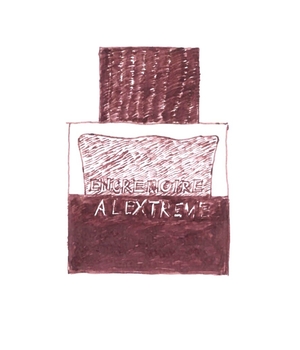 Lalique has been associated with perfume since 1907, when its founder, René Lalique, began to produce alluring glass bottles for the prodigiously entrepreneurial French perfumer François Coty. But it wasn’t until 1992 that the company launched a perfume of its own with Lalique de Lalique.
Lalique has been associated with perfume since 1907, when its founder, René Lalique, began to produce alluring glass bottles for the prodigiously entrepreneurial French perfumer François Coty. But it wasn’t until 1992 that the company launched a perfume of its own with Lalique de Lalique.
Encre Noire – literally ‘black ink’ – was released in 2006, and was quickly hailed as one of the best vetiver scents around. Created by the talented perfumer Nathalie Lorson from the Swiss fragrance-and-flavour firm Firmenich, it blends good-quality vetiver (whose earthy, slightly bitter smell comes from the roots of a tropical grass) with the woody notes of cypress and a long-lasting synthetic called Cashmeran, whose effect is as plush as its name.
Though Encre Noire is still available, and presumably a steady seller, Lalique has celebrated its 10th anniversary by launching a slightly more powerful, punchy version called Encre Noire à l’Extrême. Created again by Nathalie Lorson, the new perfume blends two different vetivers, one from Haiti and the from Java, and adds touches of iris, incense, sandalwood and patchouli.
If rather stronger and heavier than the earlier Encre Noire, it’s still a very attractive fragrance, and while Lalique claims that Encre Nore à l’Extrême ‘redefines masculinity’, we feel that it would smell equally appealing on a man or a woman. Think ink.
Hermès
Eau de Néroli Doré and Eau de Rhubarbe Eclarate
11 November, 2016
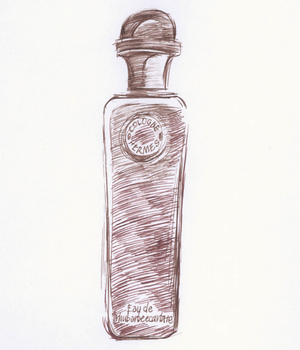 In spring 2016, after ten years as Hermès’ in-house ‘nose’, Jean-Claude Ellena handed over the (no doubt luxuriously designed) reins to the Swiss-Italian perfumer Christine Nagel. Hermès celebrated the handover with two new additions to its Colognes range, one by Ellena and the other by Nagel – her first perfume for the brand.
In spring 2016, after ten years as Hermès’ in-house ‘nose’, Jean-Claude Ellena handed over the (no doubt luxuriously designed) reins to the Swiss-Italian perfumer Christine Nagel. Hermès celebrated the handover with two new additions to its Colognes range, one by Ellena and the other by Nagel – her first perfume for the brand.
Ellena’s Eau de Néroli Doré is a fittingly sumptuous sign-off from this much-lauded perfumer, using high concentrations of neroli oil, extracted from the flowers of the Seville orange tree. It’s as refined and elegant as the man himself, and like most of his fragrances it also contains an ingredient more often associated with food. In this case it’s saffron, which (to my nose at least) seems to give the perfume an added touch of smoothness and sheen.
Christine Nagel’s Eau de Rhubarbe Eclarate, by contrast, is an exercise in sheer vivacity and ebullience, using the smell of freshly-cut rhubarb and extending its longevity with the soft, refined scent of modern synthetic musks. It’s fruity and sweet and instantly appealing, more emotional than intellectual, but certainly great fun. With its ruby-red bottle it’s a real pick-me-up at the start of the day; save the golden Eau de Neroli Doré for later.
Frédéric Malle
Monsieur.
1 November, 2016
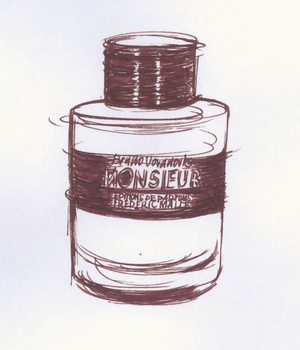 Monsieur. (aka Monsieur Dot) has divided opinion among my friends. Reactions have ranged from ‘cough mixture’ and ‘Vicks VapoRub’ to ‘virile’ and ‘chest wig’. Malle himself describes it as ‘super manly, very polished, though not affected’ and as having ‘a natural masculine elegance.’
Monsieur. (aka Monsieur Dot) has divided opinion among my friends. Reactions have ranged from ‘cough mixture’ and ‘Vicks VapoRub’ to ‘virile’ and ‘chest wig’. Malle himself describes it as ‘super manly, very polished, though not affected’ and as having ‘a natural masculine elegance.’
Created by the French perfumer Bruno Jovanovich, Monsieur. is a disco anthem to the 1970s playboy, all bay rum and alcohol with a whiff of cigarette smoke thrown in – think George Best meets Gianni Agnelli.
It’s based around patchouli, that all-too-popular scent of the time, but rather than the sweet, dope-addled patchouli of Camden Market hippy shops, this patchouli is raspy and slightly grubby round the edges, reminding us that it’s derived from an Indian roadside weed.
According to Malle, patchouli accounts for half of Jovanovich’s formula, but there’s also an odd mix of sweet and bitter ingredients, including mandarin orange and bay rum. The formula also includes synthetic amber and musk for longevity and plushness, with cedar, frankincense and vanilla adding extra smokiness and depth. ‘Bruno showed the appetite of a young perfumer,’ Malle says. ‘He wanted to work on a classic and to compare himself with the other star perfumers I’ve been working with. That being said, he proved that he is already super mature when it comes to finishing such a hard product to make.’
If you like old-fashioned masculine smells and rum then Monsieur Dot is probably for you; if not you might find its bitter patchouli a bit too punchy for your taste, though Malle is unrepentant. Asked whether he thinks that men are re-embracing a more traditional form of masculinity, he proffers a very Gallic reply. ‘We live in a kaleidoscope full of different characters – a sort of “à la carte” world. There must be traditional, no bullshit, traditional elegance out there.’
As for its intriguing name, Malle explains that his idea was for a perfume, in his words, ‘Designed for a real Monsieur with no extra thrills or necessary embellishment, hence the “.”’ I get his point.
Elie Saab
Essence No 6: Vetiver
29 November, 2015
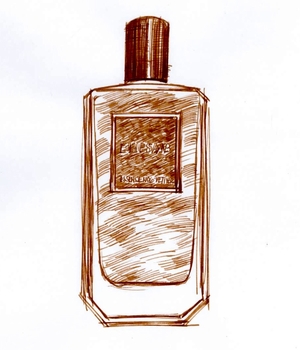 Is it just me, or would you be more impressed if a successful fashion designer decided not to do a perfume range than decided to do one? But there we are: perfume and fashion have gone together since the days of Paul Poiret, and you can’t blame Elie Saab from joining the crowd.
Is it just me, or would you be more impressed if a successful fashion designer decided not to do a perfume range than decided to do one? But there we are: perfume and fashion have gone together since the days of Paul Poiret, and you can’t blame Elie Saab from joining the crowd.
Actually perhaps that’s a bit unfair, as Saab’s new perfume, Essence No 6: Vetiver, is a really fine unisex fragrance, cleverly balancing the slightly damp earthiness of vetiver with the woody, floral scent of violet and herbal lavender.
There again maybe I shouldn’t have been surprised, as like all of Saab’s fragrances, Vetiver is the work of Francis Kurkdjian, who is now arguably the leading perfumer of his generation. French-born Kurkdjian sprang to fame at the age of 26 when he created Le Male for Jean-Paul Gaultier, and he has gone on to launch a stream of commercial hits, from Armani Mania to My Burberry. Yet he’s remained a highly creative perfumer, with his own excellently packaged Maison Francis Kurkdjian line.
In 2010 Saab signed a ten-year deal with Beauté Prestige International, one of the big perfume licensing companies (which in turn is owned by Shiseido), and the first Elie Saab perfume came out the following year. The Essences range was launched in August 2014, and Essence No6: Vetiver is the latest addition, along with Essence No7: Neroli (funnily enough there isn’t an Essence No5 in the range, presumably for Chanel-related reasons).
Vetiver has long been one of the most popular ingredients in perfumery, particularly in men’s perfumes. It’s not hard to understand why: the dried roots of this tropical grass have a wonderfully earthy, sexy, slightly bitter smell. You could probably use good-quality vetiver oil as a scent in its own right, but understandably enough, creative perfumers enjoy the challenge of combining it with other ingredients to bring out its specific qualities. In Guerlain’s classic Vétiver, for example, it’s combined with the lemony citrus smells you’d expect to find in a men’s cologne.
For Essence No6: Vetiver, perfumer Francis Kurkdjian has done something a bit different, by softening the earthy vetiver with the gentler, less abrasive scents of lavender, cloves, geranium and bergamot orange. Together they give Essence No6 a gentle touch of fruit, and even a hint of chocolate, though vetiver remains the star of the show. The result is deliciously rich and rounded, and you can really sense the quality of the ingredients. The chunky glass bottle, too, has an appealing weight to it, helped by the attractively unfussy, rather retro design, like a men’s after-shave from the 1930s. Perfect for wearing every day.